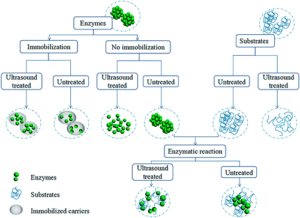Enzymes serve as microscopic workhorses, catalyzing reactions that revolutionize the way fabrics are processed and finished. These biological catalysts play diverse roles, offering a range of advantages while reshaping the sustainability landscape of the textile industry.
Advantages of Enzymes in Textiles

Enzymes have emerged as game-changers in the textile realm, bringing forth a myriad of advantages. Firstly, they promote eco-friendly practices by reducing the reliance on harsh chemicals traditionally used in textile treatments. The use of enzymes significantly lowers the environmental impact of textile manufacturing, aligning with the global shift towards sustainability.
Moreover, these biological catalysts enhance the efficiency of various textile processes. From desizing and scouring to bio-polishing and color retention, enzymes optimize these procedures, resulting in reduced energy consumption and water usage. This efficiency not only benefits the environment but also contributes to cost-effectiveness in textile production.
Another remarkable advantage lies in the improved quality of textile products. Enzymatic treatments enhance fabric properties, such as softness, color vibrancy, and durability, meeting consumer demands for high-quality and long-lasting textiles.
Types of Enzymes Used in Textiles

The textile industry employs various types of enzymes, each tailored to perform specific functions in different stages of textile processing. Amylases, for instance, assist in removing starch-based sizing agents from fabrics during desizing, ensuring thorough cleaning without damaging the fibers.
Cellulases, another critical enzyme group, play a pivotal role in bio-polishing. They act on cellulose fibers, removing protruding fibers and surface fuzziness, resulting in a smoother fabric with enhanced luster and improved dye uptake.
Proteases, on the other hand, contribute to processes involving protein-based stains or finishes. They efficiently break down proteinaceous contaminants, enhancing the cleanliness and aesthetic appeal of textiles.
Applications of Enzymes in the Textile Industry
Enzymes find widespread applications in textile finishing, dyeing, and overall fabric enhancement. Bio-polishing, a prominent application, involves the use of enzymes to smoothen fabric surfaces by removing protruding fibers, resulting in a softer and shinier texture.
Additionally, enzymes aid in stone washing, a technique used to achieve a distressed or worn-out appearance in denim. They facilitate the selective removal of indigo dye from denim fibers, creating the sought-after vintage look.
Enzymes play a crucial role in color retention treatments, ensuring that dyes adhere firmly to the fabric, thereby preventing fading and enhancing colorfastness.
Conclusion
Enzymes have become indispensable in the textile industry, driving innovation, sustainability, and quality improvements. Their multifaceted roles and eco-friendly attributes make them integral components in the journey towards a more sustainable and efficient textile manufacturing landscape. If you are looking for a reliable woven fabric manufacturer, please contact us.



